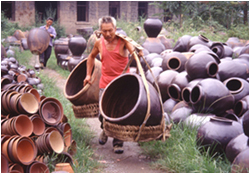- Home
- > Study Groups and their Achievements
- > Group 2: Overview of Arrangement and Systematization of Physical Techniques and Sensibility
- > Task 1
Study Groups and Achievements
Arrangement and Systematization of Physical Techniques and Sensibility
Task 1: Comparative Study of Physical Techniques
- Research Process
- │
- Research Results
This task centers on two main pillars – “study of various aspects of sensibility as the premise of research on nonwritten cultural materials” and “study of various aspects of techniques of body and senses as nonwritten cultural materials.” In pursuing the first theme, we examined human senses we have developed or lost since our ancestors started to walk on foot in relation to entire human culture, the double articulation of verbal language and characteristics of letters as two-dimensional visual representations of the world. In conjunction with the second theme, we made cross-cultural comparisons of techniques of body and senses used to carry things, postures for working, and body movements seen in dances. Our research covers Japan, China, Mongolia, European countries like France, West Africa including Burkina Faso, Mexico and Brazil.

We also conducted research to reveal universality in the relationship between physical expressions used in the performing arts and what is intended to be conveyed through them, using motion-capture CG. Digitalized physical expressions were fed into a human body model which has 14 joints, and the data was analyzed. Then, the results were statistically processed so that distinctive features of the movements could be extracted. Furthermore, we analyzed magical “Henbai” steps – ritual stumping performed during the Hanamatsuri festival. We took full advantage of motion-capture GC which allows us to observe body movements from all directions. We produced data capturing the digital character in motion head-on and stored it on a DVD.
